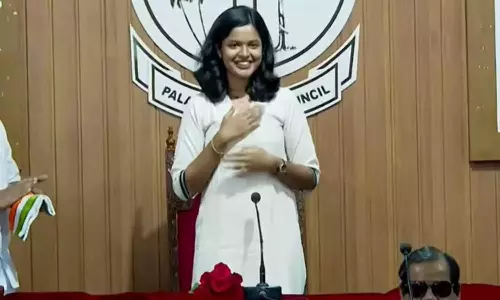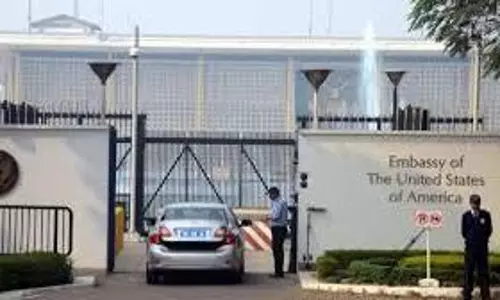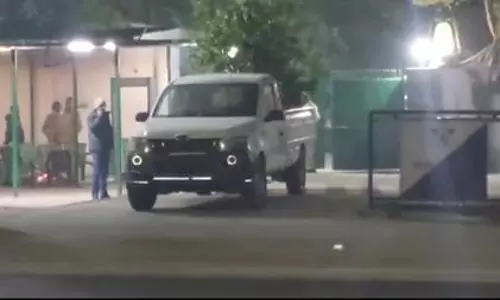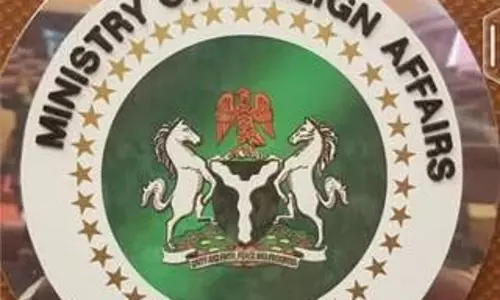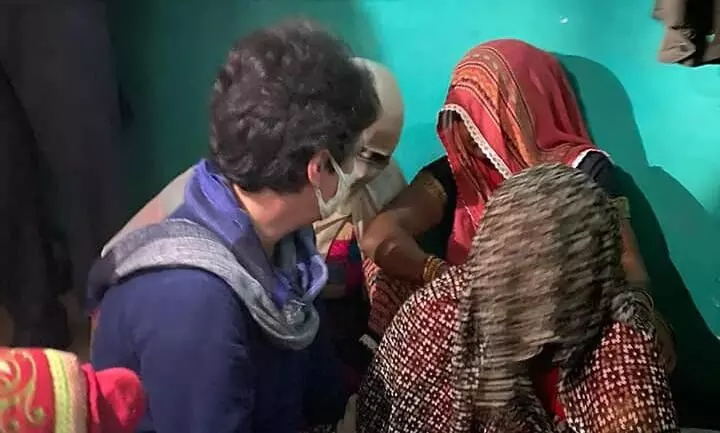
Destroying evidence: a growing industry
text_fieldsCongress General Secretary Priyanka Gandhi meets Hathras Victim's mother (Image Courtesy :https://www.facebook.com/priyankagandhivadra)
But even this decision was taken under force by the UP government. Until Congress leaders Rahul Gandhi and Priyanka Gandhi visited the victim's family, the administration had resisted such demands and were trying to cover up the crime and the criminals. Even those who came to pacify the family were prevented from meeting them; so were the media. The police locked in the family and seized their mobile phones. But when the nation's conscience overcame all those hurdles to raise its united voice, those in power could not help listening to it. But will that be enough to ensure justice? That era is long past when truth was certain to be uncovered in cases taken up by the CBI. Even the Supreme Court had once called the CBI a caged parrot, when it was seen to invariably toe the executive's dictates. The bereaved family has asked for an enquiry under the supervision of the Supreme Court. Such cases also make it clear that the citizens do not put much trust in our investigation agencies and police machinery. Hathras case only reinforces that perception. For any one having any doubt, the BJP leader of Hathras, Rajveer Singh Pahalwan has already declared the final conclusion: there was no rape, the accused were innocent and the CBI will prove their innocence.
Hathras represents only one in a series of female torture cases in Uttar Pradesh, and one among the numerous Dalit torture incidents too. The phenomenon of law following the will of the higher-ups in such cases, has gained strength during the regime of Yogi Adityanath. And there is more to it: not only do the culprits enjoy full freedom, but the very process of destroying all evidence and saving the accused, is getting institutionalised. Although in the new India this is rampant, it is in UP that it assumes the features of an industry. The only thing special for Hathras is that this was shamelessly open. Not only did the victim fail to get security, but even posthumous justice was denied to her.
The attempts, following the crime on 14 September, to conceal it and to rescue the criminals are as shocking as the murder itself. The District Magistrate burned the victim's dead body by force in the thick of midnight, and refused to show it to the relatives. There was no poojari according to the family tradition. If the police can burn the dead body of torture victims in the dark, what is the relevance of having any law at all? Which law lays down that the case, evidence and investigation all can be as per the whims of the police? The midnight act was definitely a ruse to destroy evidence. If that is not enough, there are other ways to checkmate the case too. When the victims of a crime are subjected to autopsy and post-mortem, both ought to be done with utmost care and precision. In the case of the Hathras girl, there are contradictions between them. By now, inconsistencies have been noticed in the victim's name and age and signs of the crime. It has been pointed out that the statement by ADGP Prashant Kumar that there is no proof of rape, was by twisting the definition of rape in law. Accounts are being created in such a way as to contradict the fact stated by the woman in her dying declaration. There are even reports that PR firms are being hired to create stories. Our investigative machinery has become so metamorphosed that a PR company can issue a press relase to the media, including foreign media that there was no rape in the Hathras incident. Their reasoning is that the forensic enquiry and preliminary medical examination establish that there was no sexual torture. Thus new 'findings' are reportedly being manufactured behind the curtain that this was just another case of honour killing; and torture was only a fabrication; and there was nothing more than caste hatred. When there is a spirited attempt among investigation centres, propaganda and political levels to hide the crime, entrusting the case to the CBI will only help the official version get validated. And many a time the CBI has proven that it is adept at not only getting at the truth, but also at covering it up.




